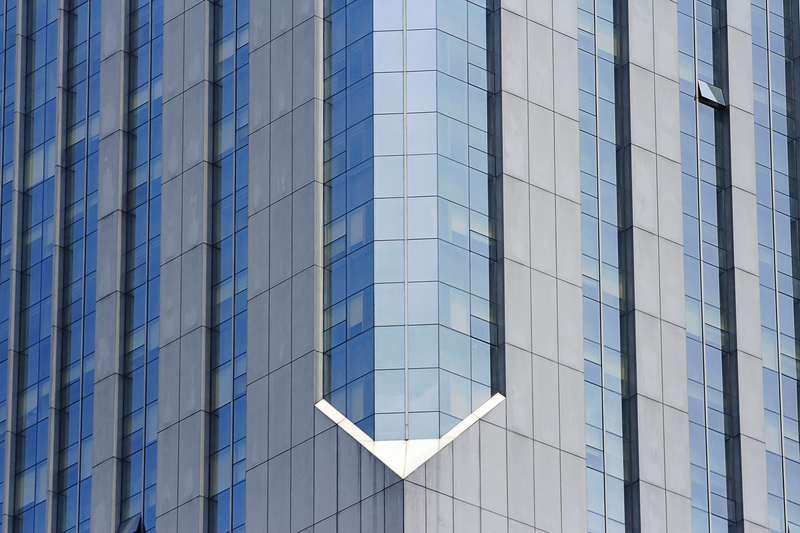Types of Curtain Walls and Their Advantages
Curtain walls are increasingly becoming popular in modern buildings, given the growing fascination with biophilic designs. Their aesthetic and functionality allow architects to develop buildings that embrace inclusivity of different industrial elements while allowing for better views and optimization of natural light.
Quality curtain wall materials protect the outside surface from damage by the elements and improve thermal efficiency. Aluminum is one of the favored options because of its lightweight nature and low maintenance. As with the materials, there are also varying types of curtain walls. Let's get into the most common ones and their suitability.

How To Choose Stick vs Unitized Curtain Walls
Stick vs Unitized curtain walls each have unique advantages. That said, there are some parameters that you should consider as you determine the type that is suitable for your project design. For instance, both the stick curtain wall system and unitized curtain wall systems are ideal for enhanced energy efficiency. If you desire a curtain wall type that is visually appealing and allows for natural lighting, the ladder curtain wall design is a good option.
Another essential consideration is the storage space for your building materials. This allows you to determine whether assembly of the curtain wall panels will be done during purchase or at the project site.
Common Types of Curtain Wall Systems
Stick-Built Curtain Walls
This structural aluminum-built curtain wall is known for its flexibility. It has extruded transforms and mullions made using the extrusion process making them ideal for complex surfaces.
The components of the curtain wall are cut to size and delivered to the project site for installation. Stick-built curtain walls come in the concealed, semi-concealed, exposed concealed, classifications. Some technical advantages of this type are:
● Reduced storage space requirements
● Made from quality material for enhanced tolerance
● Suitable for intricate architectural designs that engineers cannot prebuild
● Reduced labor cost
● Shorter lead times
Unitized Curtain Walls
This curtain wall type is transported to the project site as complemented panels. It features components like aluminum frames, terracotta, finish glass in-fills, etc. They are fabricated, cut to length, and put together before being shipped to the building’s location for installation.
The best thing about unitized curtain walls is that they save you time that you would use to individually install the panels on site.
Also, their faster production is one reason why they are highly favored by high rise building architects.
Advanced equipment is required for the installation process; lifting and safely bolting the curtain walls in position. Any damaged pieces during transport have to be reworked which can be a setback to the time efficiency. Unitized curtain walls offer benefits like:
● Made from quality materials that are easy to maintain
● installation process
● Improved energy efficiency thanks to the fewer seams
● Suitable for large building projects
● Improved protection from outside elements
Ladder Curtain Walls
Although the ladder curtain walls are less common than the aforementioned types, they are worth a mention. Basically, they are an integration of both the stick-built curtain walls and the unitized curtain walls. However, they require additional components like joint lines and seams during installation because of the smaller fabricated pieces. Just like the stick-built type, ladder curtain walls are pre-made then assembled on site. Some advantages are:
● They minimize sway by dispersing kinetic energy
● They enhance the aesthetics of the building
● Allow natural lighting inside the building
● They are customizable
Curtain Wall Materials
Stainless - This is a common type of curtain wall material because of its top quality and solid strength.
Rubber - This rubber material is used to produce strip wall hangings for curtain wall installation. The flexibility of the rubber allows for different lengths and patterns.
Spider - These materials are mostly used for commercial building curtain walls. They are basically large clear glasses that allow for a better view and protective insulation. They are also efficient for natural lighting.
Fiberglass - fiberglass material is common for its efficient expansion and contraction properties and outstanding thermal performance.
Photovoltaic - this material is developed using modern technology, hence its energy saving, electric generation and weather resistance properties.
Conclusion
Types of curtain wall systems enhance the aesthetics of your building design while allowing for energy efficiency. They are also durable due to their weather resistance properties. Project needs are the key determining factors of the most ideal type of your project. Also, the curtain wall types in the market come at varying cost so consider types within your budget.
After you settle on the most suitable curtain wall type, you will require an experienced and reputable curtain wall installation company to actualize the curtain wall design you desire. WEIYE is a leading supplier of different types of aluminum curtain wall systems that you can easily integrate in your building project.



